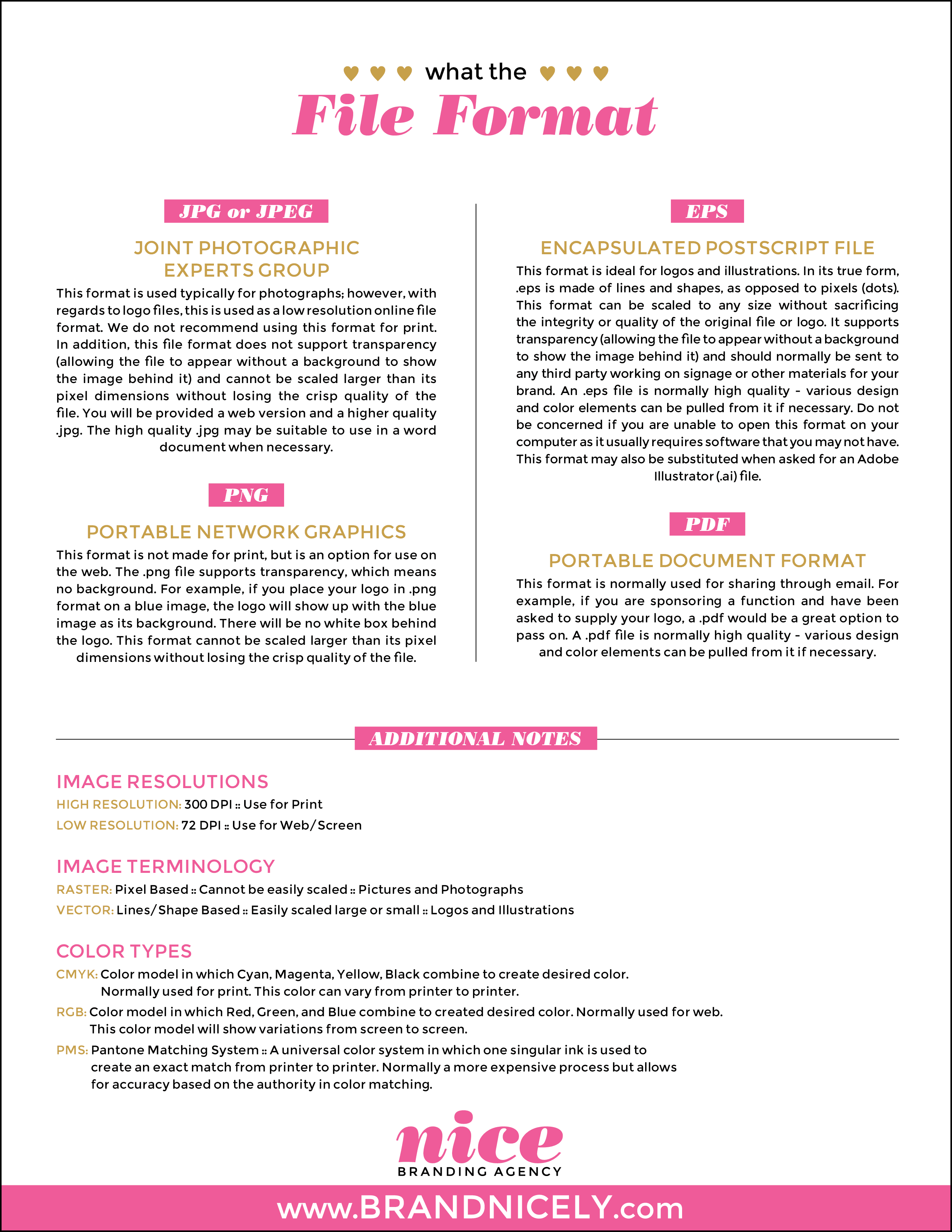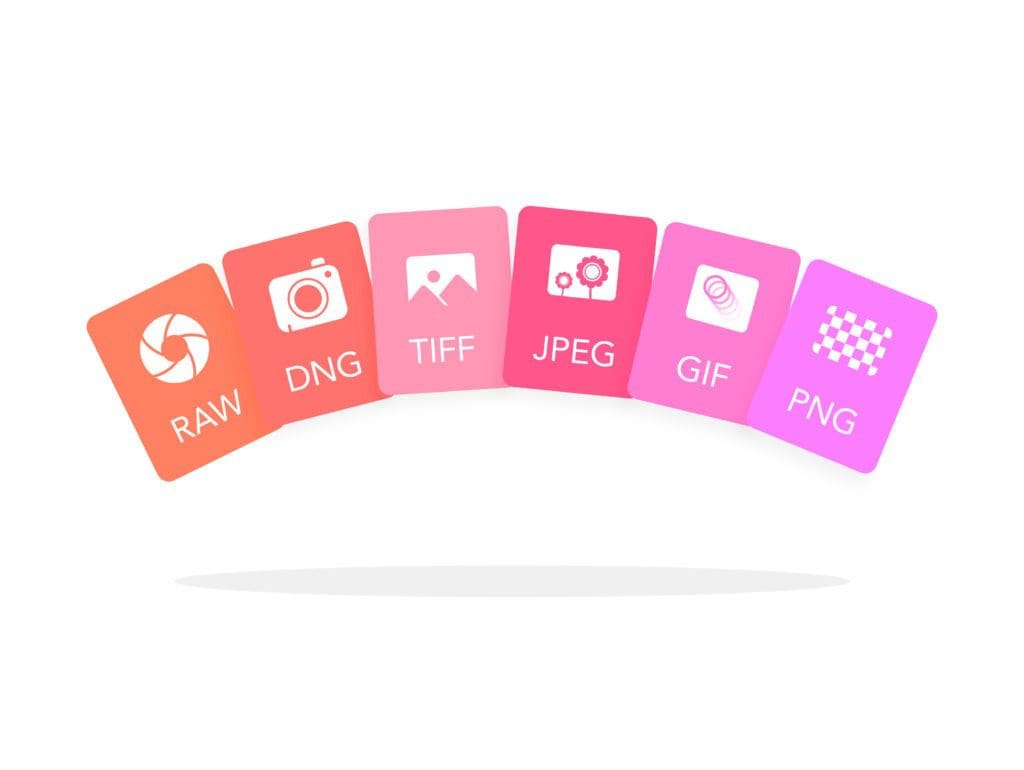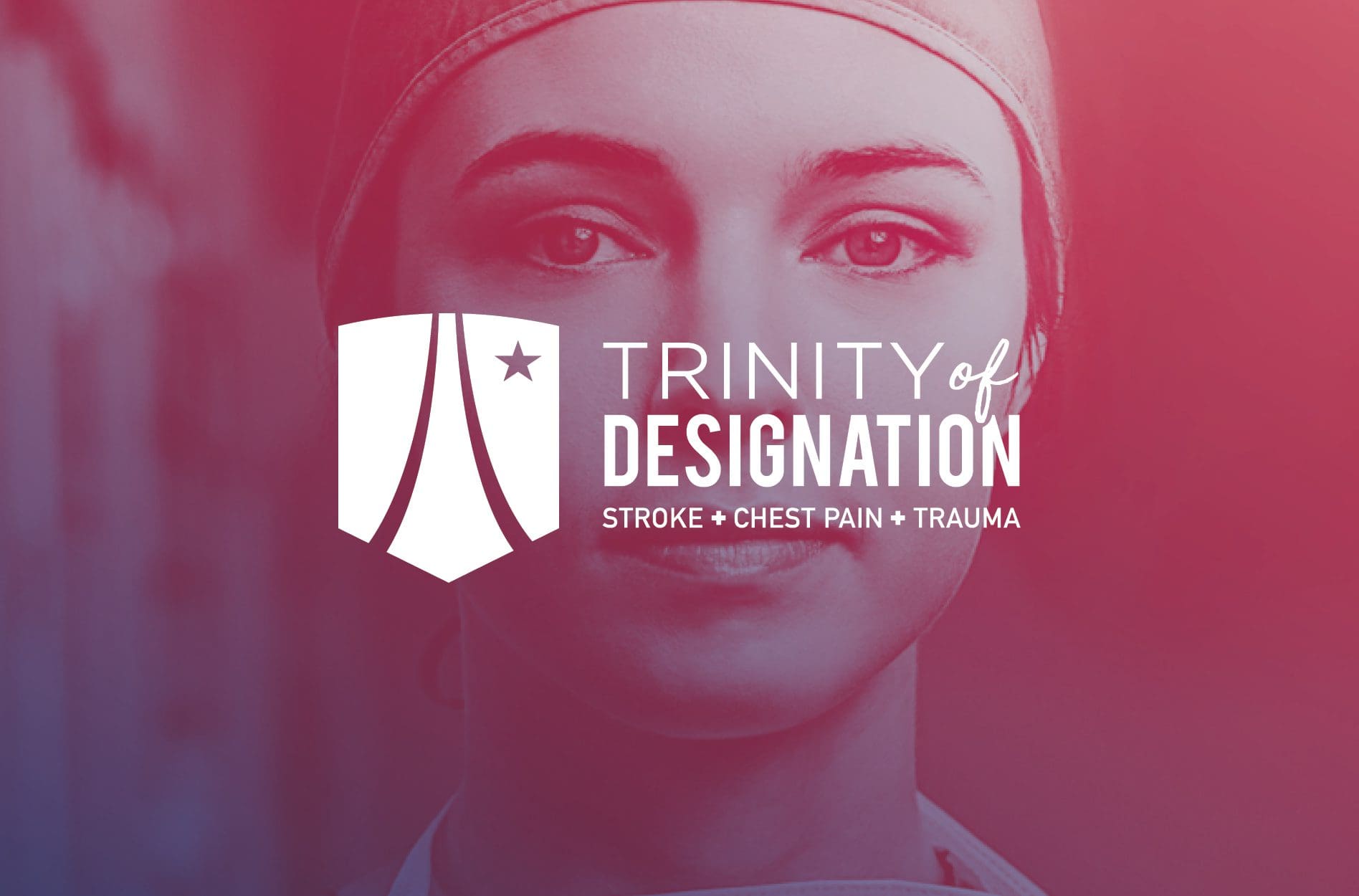What The File Format?!?
Wondering what all those file formats are you received from the best branding company in Nashville? Here's a quick self-help guide to decode what the file formats mean, what they should be used for, and why you can or can't open them on your machine. And... just because we are Nice, we've also provided you some helpful definitions when it come to images, resolutions and colors.

JPG or JPEG: JOINT PHOTOGRAPHIC EXPERTS GROUP
This format is used typically for photographs; however, with regards to logo files, this is used as a low resolution online file format. We do not recommend using this format for print. In addition, this file format does not support transparency (allowing the file to appear without a background to show the image behind it) and cannot be scaled larger than its pixel dimensions without losing the crisp quality of the file. You will be provided a web version and a higher quality .jpg. The high quality .jpg may be suitable to use in a word document when necessary.PNG: PORTABLE NETWORK GRAPHICS
This format is not made for print, but is an option for use on the web. The .png file supports transparency, which means no background. For example, if you place your logo in .png format on a blue image, the logo will show up with the blue image as its background. There will be no white box behind the logo. This format cannot be scaled larger than its pixel dimensions without losing the crisp quality of the file.EPS: ENCAPSULATED POSTSCRIPT FILE
This format is ideal for logos and illustrations. In its true form, .eps is made of lines and shapes, as opposed to pixels (dots). This format can be scaled to any size without sacrificing the integrity or quality of the original file or logo. It supports transparency (allowing the file to appear without a background to show the image behind it) and should normally be sent to any third party working on signage or other materials for your brand. An .eps file is normally high quality - various design and color elements can be pulled from it if necessary. Do not be concerned if you are unable to open this format on your computer as it usually requires software that you may not have. This format may also be substituted when asked for an Adobe Illustrator (.ai) file.PDF: PORTABLE DOCUMENT FORMAT
This format is normally used for sharing through email. For example, if you are sponsoring a function and have been asked to supply your logo, a .pdf would be a great option to pass on. A .pdf file is normally high quality - various design and color elements can be pulled from it if necessary.IMAGE RESOLUTIONS
HIGH RESOLUTION: 300 DPI :: Use for Print LOW RESOLUTION: 72 DPI :: Use for Web/ScreenIMAGE TERMINOLOGY
RASTER: Pixel Based :: Cannot be easily scaled :: Pictures and Photographs VECTOR: Lines/Shape Based :: Easily scaled large or small :: Logos and IllustrationsCOLOR TYPES
CMYK: Color model in which Cyan, Magenta, Yellow, Black combine to create desired color. Normally used for print. This color can vary from printer to printer. RGB: Color model in which Red, Green, and Blue combine to created desired color. Normally used for web. This color model will show variations from screen to screen. PMS: Pantone Matching System :: A universal color system in which one singular ink is used to create an exact match from printer to printer. Normally a more expensive process but allows for accuracy based on the authority in color matching. And there you have it — File Formats Defined.






